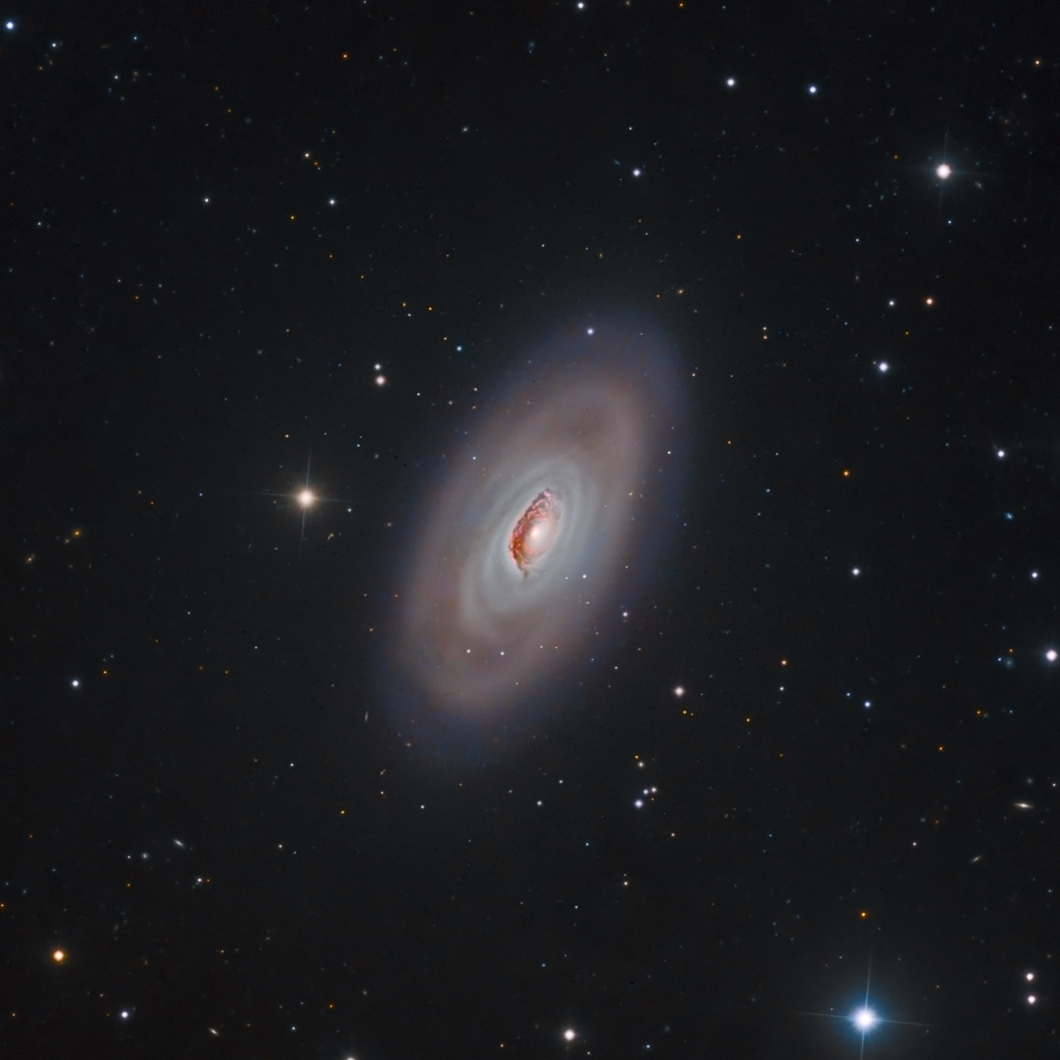Technical Information:
HaLRGB: 510:495:180:180:240 (that's almost 24 hours of keepers included in this image); Ha data consists of 17 twenty-minute images, woven into the
red-filtered data. Luminance layer consists of data from 33 fifteen-minute images through the luminance (clear) filter; R, and G
consist of fifteen-minute images; B consists of twenty-minute images. I gathered Ha data to enhance the pink star-forming region at the center of the galaxy.
All images were unbinned.
Equipment: RC Optical Systems 14.5 inch Ritchey-Chretien carbon fiber truss telescope, with ion-milled optics and RCOS field flattener, at about f/9, and an SBIG STX-16803 monochrome
camera with internal filter wheel (SBIG filter set), guided by an SBIG AO-X, all riding on a Bisque Paramount ME German Equatorial Mount.
Image Acquisition/Camera Control: Maxim DL, controlled with ACP Expert/Scheduler, working in concert with TheSky X Professional Edition.
Processing: All images calibrated (darks, bias and sky flats), aligned, combined and cropped in Pixinsight. RGB Color combine in Pixinsight. Some finish work (background neutralization,
color calibration, HDR Mulitscale Transform and Multiscale Linear Transform of luminance data, and noise reduction) done in Pixinsight; LRGB combination and some further finish work was done in Photoshop CC.
Location: Data acquired remotely with my equipment hosted by Sierra Remote Observatories, Auberry, California, USA.
Date: Images taken on many nights in June, 2021. Image posted August 14, 2021.
Date: Image scale of full-resolution image: 0.56 arcseconds per pixel.
Seeing: Generally excellent, with individual calibrated luminance frames varying from 1.3 to 1.7 arcsecond FWHM.
CCD Chip temperature: -25C

